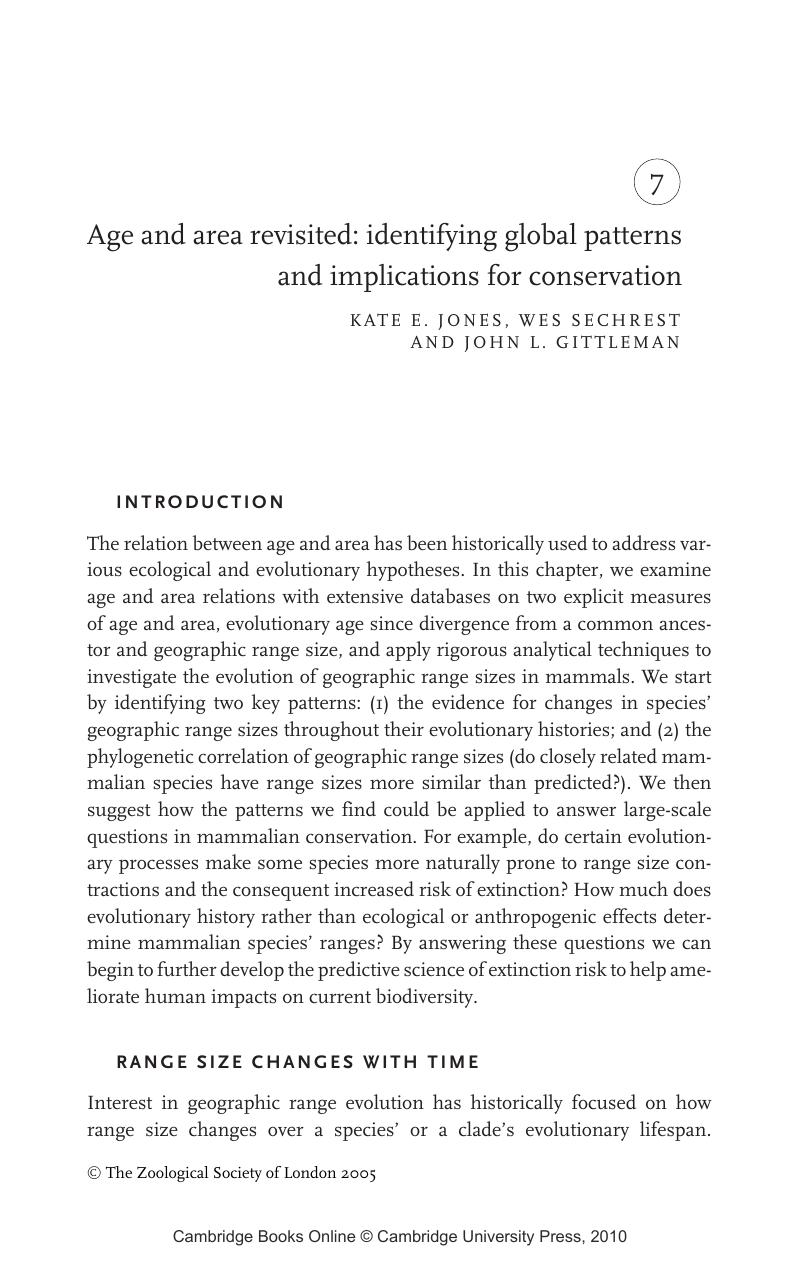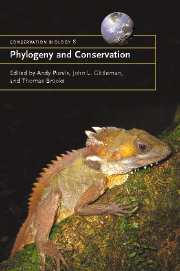Book contents
- Frontmatter
- Contents
- List of contributors
- 1 Phylogeny and conservation
- Part 1 Units and currencies
- Part 2 Inferring evolutionary processes
- 7 Age and area revisited: identifying global patterns and implications for conservation
- 8 Putting process on the map: why ecotones are important for preserving biodiversity
- 9 The oldest rainforests in Africa: stability or resilience for survival and diversity?
- 10 Late Tertiary and Quaternary climate change and centres of endemism in the southern African flora
- 11 Historical biogeography, diversity and conservation of Australia's tropical rainforest herpetofauna
- Part 3 Effects of human processes
- Part 4 Prognosis
- Index
- References
7 - Age and area revisited: identifying global patterns and implications for conservation
Published online by Cambridge University Press: 04 December 2009
- Frontmatter
- Contents
- List of contributors
- 1 Phylogeny and conservation
- Part 1 Units and currencies
- Part 2 Inferring evolutionary processes
- 7 Age and area revisited: identifying global patterns and implications for conservation
- 8 Putting process on the map: why ecotones are important for preserving biodiversity
- 9 The oldest rainforests in Africa: stability or resilience for survival and diversity?
- 10 Late Tertiary and Quaternary climate change and centres of endemism in the southern African flora
- 11 Historical biogeography, diversity and conservation of Australia's tropical rainforest herpetofauna
- Part 3 Effects of human processes
- Part 4 Prognosis
- Index
- References
Summary

Information
- Type
- Chapter
- Information
- Phylogeny and Conservation , pp. 141 - 165Publisher: Cambridge University PressPrint publication year: 2005
References
Accessibility standard: Unknown
Why this information is here
This section outlines the accessibility features of this content - including support for screen readers, full keyboard navigation and high-contrast display options. This may not be relevant for you.Accessibility Information
- 21
- Cited by
